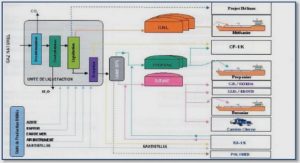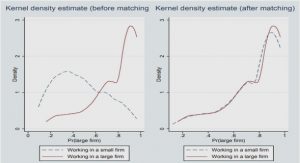Get Complete Project Material File(s) Now! »
BONE
Bone is a complex living tissue that has the ability, like other tissues, to change, repair and modify its structure. Bone functions in support, protection, as a system of levers for movement, blood production and as a calcium reserve (Young et al., 2006; Silverthorn, 2007; DiGangi and Moore 2013). Development and growth of the bones takes place in either of two ways: intramembranous ossification or endochondral ossification. Endochondral ossification is found in the formation of the long bones (i.e. femur, humerus), however, the flat bones and those of the skull are formed through the process of intramembranous ossification. A precursor to the development of this type of bone is the fibrous membrane of periosteum where the cells which perform osteogenesis are found. This membrane contains the cells responsible for bone formation (osteoblasts) and bone resorption (osteoclasts). The osteoblasts are found in a continuous layer on bone surfaces, performing deposition to function in the reconstruction and remodelling of bone, whereas osteoclasts are initiated in response to a decrease in use and/or strain and begin remodelling through resorption (Cowin, 1989; White, 2000).
There are two types of bone in the human skeleton, a spongy bone in appearance called trabecular bone, and a hard compact bone known as cortical bone. Both types of bone vary structurally and in their primary functions. Their specific structure is related to their function where the hard compact bone provides a mechanical and protective function throughout the skeleton and the trabecular bone serves in a metabolic capacity (Cullinane and Einhorn, 2002). When looking at the flat bones of the skull, it is easy to see the hard cortical bone located on the outer surfaces and sandwiched between is the softer trabecular bone. The bones of the skull are deformable and can be acted on by forces. In response to these forces over time bone can begin remodelling to a stress history (Frost, 2003; Ruff et al., 2006). Depending on the activities, the stimulus will initiate an increase in bone formation where there is a deployment of a new bone matrix and/or a resorption of existing bone (Figure 1). Regardless of its creation or destruction, bone must remodel in order to efficiently and successfully support the loads to which it is being continuously exposed.
Postnatal ontogeny is characterized by shape changes which occur between birth and adulthood. These shape changes occur, in part, in response to the mechanical demands which initiate the remodelling of bone surfaces of the craniofacial skeleton (Cobb and O’Higgins, 2004). For example, the growth and change in the maxilla over time is dictated by the eruption of dentition as well as by the forces of mastication. The growth of the maxilla is directed forward to accommodate the changing dentition. The consistent growth and remodelling of the maxilla during this time causes a process of deposition on the surface and resorption of inner surfaces (Enlow and Bang, 1965). Specific adaptations to stress can vary throughout the skeleton depending on the composition of cortical and trabecular bone, anatomical location and the bone’s specific function. The trabecular bone of the skeleton is first to react to the decrease in mechanical needs and suffers a greater loss in density. The amount of trabecular bones varies from one area of the skull to another and therefore affects the mechanical properties and stiffness of the bones in this area (Smith and Suggs, 1976). Structurally, compact bone covers the skull inside and out and the trabecular bone found between the layers increases further away from the cranial sutures. The mechanical properties of compact bone are much more uniform than those of trabecular bone as one might expect, due to the matrix structure of trabecular bone (McElhaney et al., 1970). Cortical bone can also undergo a loss of bone mass but this is often a more prolonged loss of tissue.
REPEATABILITY OF MEASUREMENTS
With data collection it is necessary to determine the reliability and repeatability of the measurements and observations collected. In order to do this the inter- and intra- observer agreement needed to be determined. Inter- and intra-observer agreement was assessed using the inter-/intra-class correlation coefficient (ICC) that can be determined from one-way analysis of variance (ANOVA). Inter-observer error was determined by randomly choosing 30 skulls that were previously measured and underwent a second evaluation of both morphological characteristics and
measurements by another observer and values recorded and subjected to statistical analysis to establish observer agreement. Intra-observer error was carried out by using the same 30 skulls, repeating and recording measurements and observations and then comparing results to the original data set recorded previously by the primary observer. The inter-and intra-observer agreement with respect to skull measurements allows us to determine the repeatability and accuracy of methodology used in this study.
The results of the correlation coefficient statistics follow previously accepted values. An ICC value of one is considered a perfect correlation where a value of 0.75 or higher is a high degree of correlation, a value of 0.5 to 0.74 indicates a moderate degree of correlation between measurements and anything below 0.49 is considered a low degree of correlation for observer agreement (Allan, 1982). For the inter-observer and intra-observer error statistics for the examination of the chosen morphological characteristics of the skull the Cohen’s kappa coefficient was calculated. The kappa value measures agreement between two observers or between multiple data sets collected by the same observer. A kappa value can range between zero and one. A kappa value of one says observations are in perfect agreement which is the ideal situation (Ferrante and Cameriere, 2009).
INTER/INTRA-CLASS CORRELATION STATISTICS
Inter- and intra-class correlation statistics were calculated in order to determine whether the measurements could be repeated with a high degree of accuracy. The interclass correlation coefficient was calculated for each of the 56 measurements taken on the skull. A high observer agreement for both the inter- and intra-observer data was found for measurements with very clear landmarks such as the basion-nasion and basion-bregma measurements, for example (Table 17) (Allan, 1982). Good to very good agreement was recorded for the remainder of the cranial and dental measurements in the data set, and is within expected values found in the literature. Intraclass correlation values for cranial dimensions above 0.90 were obtained for all measurements except for the orbital breadth (0.871) and mandibular body breadth (0.872). Interclass correlation values below 90% agreement in cranial dimensions were that of the orbital breadth (0.801), mandibular body breadth (0.831), maximum ramus breadth (0.707), mandibular projective length (0.891) and temporal fossa height (0.858). These were thus more difficult to record reliably.
The measurements of zygomatic arch width and temporal fossa height were of special interest as these are not standard measurements. These measurements were created due to their location and regions of muscle attachment on the skull. The high values for both inter and intra-observer correlations indicate that these measurements can be reliably recorded and can be repeated between specimens and observers with a high degree of accuracy (Table 17). Dental measurements achieved correlation values for repeatability equal to those found previously. Hillson et al. (2005) found an increased error with the mesio-distal diameter measurements and an increased error for the molars as compared to the incisors and canines. The current results achieved similar results to previously documented data (Table 17). Hillson et al. (2005) stated that molars are more difficult to measure accurately and repeatedly. Intra-observer error values ranged from 0.875 to 0.989, while interobserver error ranged from 0.732 to 0.978.
CHAPTER 1: INTRODUCTION
CHAPTER 2: LITERATURE REVIEW
2.1 Bone
2.2 Craniofacial Development and Prognathism
2.3 Mastication
2.4 Evolution of Craniofacial Morphology for Mastication
2.5 Finite Element Analysis
2.6 Model Creation
2.7 Testing of the Hypothesis
CHAPTER 3: MATERIALS AND METHODS
3.1 Materials
3.2 Anthropometric Analysis: Measurements and Indices
3.3 Morphological Assessment
3.4 Repeatability of Measurements
3.5 Statistical Analysis
3.6 Finite Element Analysis
3.7 Analysis
CHAPTER 4: RESULTS OF METRIC ANALYSIS
4.1 Descriptive Statistics
4.2 One-way ANOVA Statistics
4.3 Linear Regression Statistics
4.4 Inter/Intra Class Correlation Statistics
CHAPTER 5: RESULTS OF MORPHOLOGICAL ANALYSIS
5.1 Frequency Distribution and Pearson Chi2 Analysis
5.2 Inter/Intra Class Correlation Statistics
CHAPTER 6: RESULTS OF FINITE ELEMENT ANALYSIS
6.1 Displacement
6.2 Pressure Analysis
6.3 Von Mises
6.4 Molar vs. Incisor
6.5 Individual Muscle Contribution of Stress for a Molar Bite
6.6 Individual Muscle Contribution of Stress for To An Incisor Bite
CHAPTER 7: DISCUSSION
7.1 Introduction
7.2 Prognathism and Size
7.3 Prognathism and Stress Distribution as Revealed by Finite Element Analysis
7.4 Constraints of Methodology
7.5 Summary
7.6 Future Directions
CHAPTER 8: CONCLUSIONS






